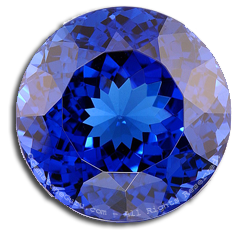Have you ever wondered what gives a gemstone its appeal? Or why some gemstones are considered precious and others semi-precious? How did mankind discover and develop modern mining techniques? And where do gemstones come from? Explore the answers to these questions and gain a basic idea of how, when, and where the global gem trade originated. Here, we will illustrate an overview with broad and colorful strokes so that you can gain a general understanding of the nature of gemstones.
What Makes a Gem ….a Gem?
Gemstones come from many sources and are comprised of different things. A gem can be a rock, a mineral, or organic matter. The main factor in elevating a rock, mineral, or biogenic substance to gemstone status comes down to two fundamental factors: rarity and beauty.
Those who live in the mountains can attest to the fact that the surface of the earth is rock. But what lies beneath the surface is believed to be very different. The structure of the earth as we know it consists of a molten metal core surrounded by shifting plates that form the mantle beneath the rocky crust. Within the rock cycle of volcanic eruption, surface erosion, transport and deposition, burial, and melting, areas of intense heat and pressure are created where rocks crystallize, bearing minerals. Gem minerals such as corundum (which comprises sapphire and ruby) and beryl (which comprises emerald and aquamarine) are widely known and appreciated as are gem rocks such as lapis and obsidian. Biogenic gems derive from organic matter and include amber, coral, and pearl to name a few.
what are Precious Gems?
The list of precious gems is short. The custom of distinguishing between precious and semi-precious began in classical Greece. The gems we recognize today as precious gems are diamonds, rubies, sapphires, and emeralds. Semi-precious gems refer to all gems other than these. The four precious gems share important factors that contribute considerably to their perceived value:
- The precious gems are exceedingly rare
- They are the hardest among gemstones
- They are all translucent
Gemstones are also characterized by their optical properties such as refractive index (how a gemstone bends light) as well as hardness and toughness. Hardness is expressed numerically from one to ten with one being the softest (talc) and ten being the hardest (diamond). This system of classification is known as the Mohs scale of mineral hardness because it was invented by a 19th century geologist named Friedrich Mohs. Hardness refers to a gemstone’s resistance to scratching while toughness refers to its resistance to chipping and breaking.
Where Do Precious Gemstones Come From?
Significant gemstone deposits have been discovered, explored, and often depleted across the globe. A significant portion of gem mining is artisanal, done by hand without a huge environmental impact. In open pit mining, huge amounts of surrounding rock are relocated. Alluvial mining is the most archaic form of mining and is still practiced today. Alluvial deposits occur when mineral deposits are transported by water and settle into the sediment. Here is a brief list of geographical locales famous for their gemstone mines:
- Ratnapura, Sri Lanka: Located in the southwest of Sri Lanka, an island off the southern coast of India, Sri Lanka is the origin of the majority of fine sapphires. The gem trade is a huge portion of this country’s economy.
- Bo Rai, Thailand: A major source of sapphires and rubies, the gem trade fueled the economy of this eastern Thailand township until the mines were exhausted.
- Mogok, Myanmar: Formerly known as Burma, 90% of the world’s rubies are mined in Myanmar. The Mogok Township is noted particularly for the color and clarity of its rubies. Most are sold to dealers in Thailand, as the oppressive government runs the mining industry and many other foreign businesses refuse to buy Myanmar rubies due to the deplorable human rights abuses by the military.
- Kimberley, Australia: This region of northeast Australia is home to the Argyle mine, the world’s only source of rare pink diamonds and represents one third of global diamond production.
- Muzo, Coscuez, and Chivor, Colombia: Known as the world’s leading source of emeralds, Colombia is also home to the world’s oldest working gem mines.
Across the World
Significant mineral deposits bearing gemstones have been discovered on every continent except Antarctica. And the peoples of the world will continue to seek out these captivating gifts from the earth. What is it about a gemstone that interests you? Do you see collecting gems as a pastime or an investment? Are you looking for something to pass on to future generations, or do you feel that the beauty of a gemstone is justification for collection in and of itself? Post your knowledge of gemstones and become a part of our gem aficionado community.
Read other posts from the Introduction to Gemstones series.

